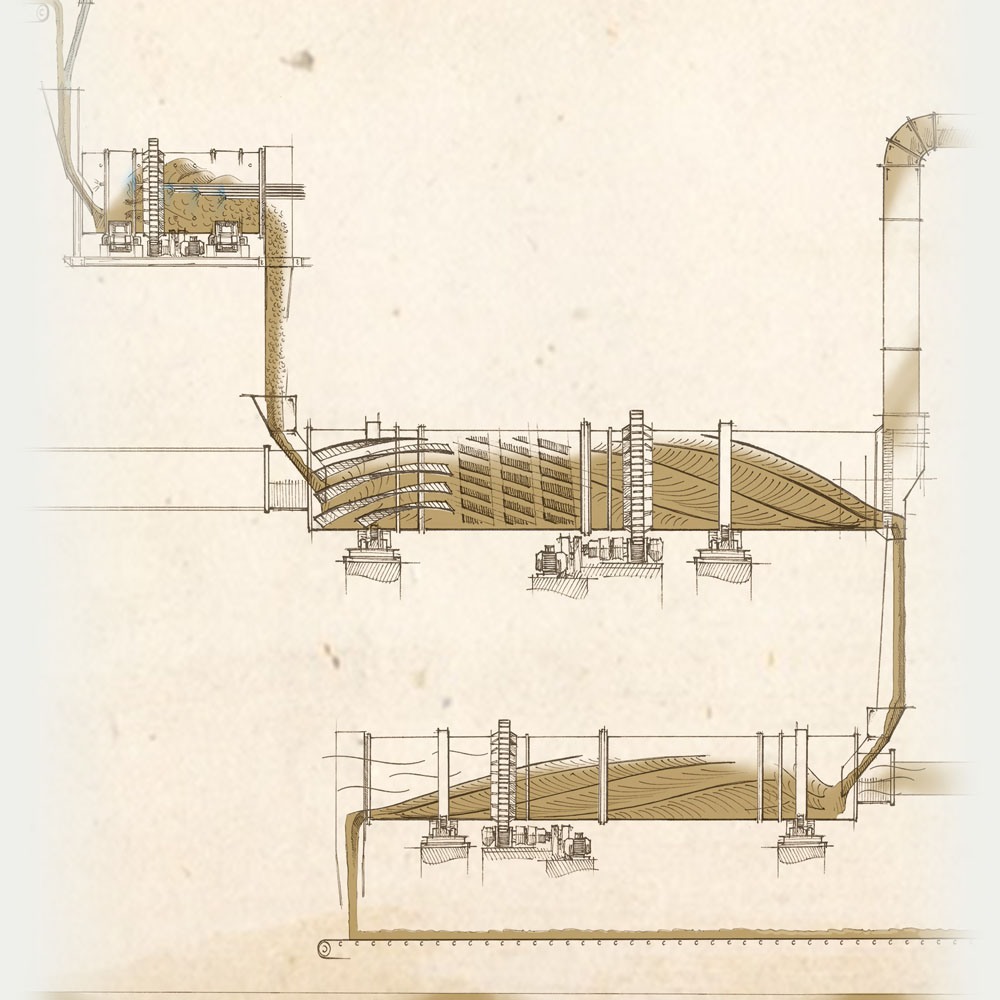
For example, in the case of fertilizers, the granule, unlike the blended elements, allows each plant, that receives a granule, to absorb all the fertilizing substances present in the starting mixture. If instead, the mixture is spread on the field as it is, each plant receives only one kind of elementary particle with its own fertilizing substance and not the others.
Even when handling and using powders, there may be problems of air dispersion of the components that is not acceptable in an industrial process, and therefore it is necessary to amalgamate the powder into hard and compact grains.
Making granules from powders or crystals is an operation that requires a good knowledge of the components to be combined, of the binding elements and of the mechanical and chemistry of the granulation process. We study and experiment with the formation of granules composed of the most different materials using specific binders for each application.
The granulation process, besides the physical formation of the granule, which is carried out inside the granulation machine, can require two successive stages, which consist in the drying and stabilizing of the product.
We design, manufacture and put into operation rotary drum granulators,
granulator dishes, rotary dryers and rotary coolers.
The rotary drum granulator is a rotary machine for the formation of granules, as its name implies.
The machine is equipped with two rolling tracks, which roll on four idler wheels,
and is driven by a crown gear coupled to the motor through a pinion and a gear reducer.

The rotary dryer, similar to the rotary granulator, is a cylinder that rotates on idle wheels, is driven by a crown coupled to the motor through a pinion and a gear reducer, and is equipped with metallic blades on the inner side. The material introduced from one end exit the other, thanks to the helicoidal movement made by the blades. The machine can be either perfectly horizontal or with a slight inclination. An inclination facilitates discharge and reduces the inside residence time of the product.
A hot gas flow, co-current or counter current to the advancing of the material, passes through the cylinder in order to dry the material itself.
The choice of flow direction depends on the product to be dried and the final temperature you require.
In fertilizer production, for example a co-current flow is adopted in order to avoid high final product temperature and a rapid drying of the external surface of granules. In aggregate drying both flow directions are adopted but the co-current is preferred when a high quantity of dust in the product is associated with high humidity.
Critical factors in the operation of the machine are the rotation speed and the type and inclination of the inner blades.

The cooler is a rotating cylinder very similar to the rotary dryer; the main difference is that the flow of the cooling air is normally countercurrent to the material.
